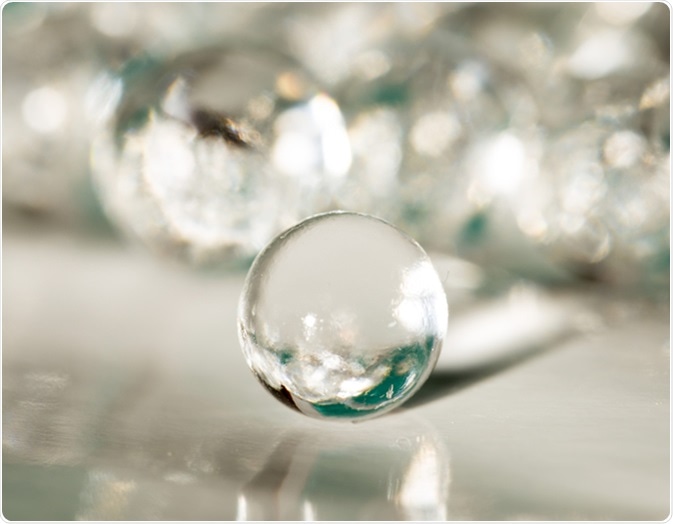Site Under Development, Content Population and SEO, Soft Launch 1st January 2020
Hydrogels have become an area of active and intense research because of their unique structural, mechanical, and rheological properties which enable them to self-heal when wounds are induced. The current aim is to fuse mechanical strength with rapid self-healing occurring within seconds of a wound. The faster the self-healing occurs, the better it is in most cases.

The feature of a self-healing hydrogel is its ability to sense environmental changes and adapt to them by altering their properties and the way they function. The key component to achieving compounds which actually perform this self-healing is to balance their hydrophobic and hydrophilic characteristics appropriately.
The applications of such materials are tremendous, from industrial to biomedical. The attraction of hydrogels in biomedical applications is also because they model natural structures such as ligaments, cartilage, and tendons. These soft but extremely tough tissues have high mechanical strength. However, the challenge is to attain such capabilities for manmade hydrogels in the presence of water and permanent chemical bonds which crosslink the molecules of the hydrogels to each other.
One way to overcome this, the polymer matrix may be attached to pendent side chains of hydrocarbons with substituted polar functional groups that could produce hydrogen bonding across a wound in the hydrogel or join two separate pieces of the hydrogel. The demands are for long and supple side chains with a flexible network so that the polar functional groups may gain access to each other across the interrupting space. Simultaneously, it is necessary to cut down the length of the side chains to avoid significant steric hindrance between the functional groups and side chain collapse due to their hydrophobicity as the length increases.
One experimental group met these challenges in the form of polymerized acryloyl-6-aminocaproic acid (A6ACA) molecules in the form of a hydrogel which could bridge the gap between the pieces despite the presence of water and of permanent crosslinking. They joined rapidly to each other by hydrogen bonding, if simply brought into contact in an acidic solution, with the resulting interface being strong enough to sustain the weight of the hydrogel, to be stretched without losing its size or shape, and even withstanding boiling water. The stress required to break the healed surface was about 66% of the intact surface, because only the hydrogen bonds had to be broken, whereas in the intact piece both hydrogen bonding and covalent bonding had to be disrupted. When exposed to a high pH the healed hydrogels separated but rehealed when the solution was reacidified. This cycle could be repeated many times.
The strength of the self-healing relates to the extent of crosslinking because this reduces the extent to which the side chains can move, or makes the hydrogel stiffer, and thus impairing hydrogen bonding both ways. The second mechanism is likely to be more important.
Self-healing hydrogels are of two types based on the nature of crosslinking:
The chief factors determining the biological utility of a hydrogel include:
The use of nanoscale fillers can be used to make the hydrogel injectable, easy to manipulate and strong depending upon the aspect ratio.
The limitation of physical healing in injured tissue is the limited time period available for the fascial and vascular tissues to begin to heal the wound. However, hydrogels may be used as scaffolds for various biomedical purposes, in forms such as a 3-D matrix, a matrix of nanofibers, a hydrogel which transitions between the sol and gel state with temperature changes, and porous microsphere.
These scaffolds are incredibly useful as they offer a platform on which cells can adhere, proliferate, differentiate, and migrate to heal the wound firmly and instantly. While the porous nature of the hydrogel allows cells as well as therapeutic agents to attach, the bioerosion of the crosslinked points permits controlled release of the drug as well as the migration of the cells to achieve the right shape, strength, and integrity of the healed tissue.
These hydrogels can be used to heal gastric mucosal ulcers and perforations.
In organ damage such as myocardial infarction, such self-healing hydrogels may be used to provide bottom-up scaffolding using microscopic building blocks to achieve the desired architecture which is then replicated rapidly by the self-healing nature of the hydrogel. The cells are distributed on this new scaffold to rebuild the missing or damaged tissue. Cell-encapsulating microgels, cell sheets, cell printing, and cell aggregation are some methods used in this way.
Chondrocyte healing is currently impossible due to the lack of self-healing in articular cartilage. A tissue culture hydrogel with included chondrocytes may be implanted in damaged cartilage to promote cell growth over it and replace the irreversibly injured part.
Gene delivery has also been made possible by using hydrogels to cross the cell membrane, the nuclear membrane, and the chromosome barrier itself. These hydrogels are used to assemble therapeutic genes into small particles designed to penetrate the targeted cell and deliver the genetic content. Some potential applications include cell-free protein production, drug release, and immunotherapy by DNA transfection. Genes and gene products to treat genetic diseases may also be available one day using this technology.
Novel drug delivery systems can also be produced using these hydrogels to form bioerodible systems to release the drug at a controlled and precise rate. They may be used to deliver certain drugs suitable for incorporation into the hydrogel structure, such as the tetracyclines.
Self-healing hydrogels have many wide-ranging biomedical applications, but the challenges are equally diverse.